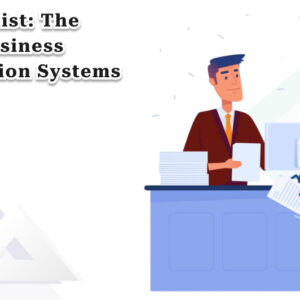Introduction: The Fintech Landscape in 2025
Remember when online banking was a novelty? Fast forward to 2025, and the financial technology (fintech) sector has undergone a seismic shift. From AI-driven personalization to blockchain innovations, fintech is not just evolving—it’s revolutionizing how we interact with money.
In this blog post, we’ll explore the key trends shaping fintech in 2025, illustrated with real-life examples and practical insights to help you navigate this dynamic landscape.
1. AI-Powered Personalization
Artificial Intelligence (AI) has moved beyond buzzword status to become a cornerstone of fintech innovation. In 2025, AI algorithms analyze user behavior to offer personalized financial advice, detect fraudulent activities, and streamline customer service through chatbots.
Real-Life Example: Fintech startups are leveraging AI to provide tailored investment recommendations, helping users make informed decisions based on their financial goals and risk tolerance.
Practical Insight: For businesses, integrating AI can enhance customer engagement and operational efficiency. However, it’s crucial to ensure transparency in AI-driven decisions to build trust with users.
2. Embedded Finance
Embedded finance refers to integrating financial services into non-financial platforms, allowing users to access banking, insurance, or payment services within apps they already use.
Real-Life Example: E-commerce platforms now offer point-of-sale financing options, enabling customers to buy now and pay later without leaving the shopping app.
Practical Insight: For companies, embedding financial services can open new revenue streams and enhance customer loyalty. It’s essential to partner with reliable financial institutions to manage regulatory compliance and risk.
3. Blockchain and Decentralized Finance (DeFi)
Blockchain technology continues to disrupt traditional financial systems by enabling decentralized finance (DeFi) solutions. These platforms offer services like lending, borrowing, and trading without intermediaries.
Real-Life Example: Some fintech firms are developing blockchain-based platforms that allow users to earn interest on their digital assets, bypassing traditional banks.
Practical Insight: While DeFi offers increased accessibility and transparency, it also presents regulatory challenges. Businesses venturing into this space must stay abreast of evolving legal frameworks to ensure compliance.
4. Digital Identity Verification
As online transactions proliferate, secure digital identity verification has become paramount. Fintech companies are adopting biometric authentication and AI-powered verification processes to enhance security.
Real-Life Example: Financial institutions now use facial recognition and fingerprint scanning to authenticate users, reducing fraud and streamlining onboarding processes.
Practical Insight: Implementing robust digital identity solutions can improve user experience and trust. However, companies must handle biometric data responsibly to protect user privacy.
5. Regulatory Technology (RegTech)
With increasing regulatory requirements, fintech firms are turning to RegTech solutions to automate compliance processes. These technologies help monitor transactions, manage risk, and ensure adherence to laws.
Real-Life Example: Some platforms use AI to analyze transactions in real-time, flagging suspicious activities and ensuring compliance with anti-money laundering regulations.
Practical Insight: Adopting RegTech can reduce compliance costs and mitigate risks. It’s vital to choose solutions that can adapt to changing regulations and integrate seamlessly with existing systems.
6. Sustainable and Ethical Finance
Consumers are increasingly prioritizing sustainability and ethical considerations in their financial decisions. Fintech companies are responding by offering green investment options and transparent reporting on environmental, social, and governance (ESG) factors.
Real-Life Example: Investment platforms now provide portfolios focused on renewable energy, social impact, and ethical governance, catering to socially conscious investors.
Practical Insight: Incorporating ESG factors can attract a growing segment of values-driven consumers. However, firms must ensure the authenticity of their offerings to avoid accusations of greenwashing.
7. Open Banking Expansion
Open banking initiatives are gaining momentum, allowing third-party developers to build applications and services around financial institutions. This fosters innovation and gives consumers more control over their financial data.
Real-Life Example: Apps that aggregate data from multiple bank accounts provide users with a comprehensive view of their finances, enabling better budgeting and financial planning.
Practical Insight: For businesses, embracing open banking can lead to new partnerships and service offerings. It’s crucial to prioritize data security and user consent in these integrations.
8. Rise of Super Apps
Super apps consolidate multiple services into a single platform, offering users a seamless experience. In fintech, this means integrating banking, investing, insurance, and more into one app.
Real-Life Example: Some fintech companies have evolved into super apps, providing a one-stop-shop for various financial services, enhancing user convenience.
Practical Insight: Developing a super app can increase user engagement and retention. However, it requires significant investment in technology and customer support to manage the complexity of integrated services.
9. AI-Driven Credit Scoring
Traditional credit scoring models are being supplemented with AI-driven assessments that consider alternative data sources, such as utility payments and social media activity.
Real-Life Example: Fintech lenders use AI to evaluate creditworthiness, enabling access to credit for individuals with limited credit history.
Practical Insight: AI-driven credit scoring can expand financial inclusion. However, companies must ensure their models are free from biases and comply with fair lending regulations.
10. Cybersecurity Enhancements
As fintech services grow, so do cybersecurity threats. Companies are investing in advanced security measures, including AI-based threat detection and multi-factor authentication, to protect user data.
Real-Life Example: Financial platforms employ machine learning algorithms to detect unusual account activities, preventing fraud and unauthorized access.
Practical Insight: Robust cybersecurity is essential for maintaining user trust. Regular security audits and user education can further strengthen defenses against cyber threats.
Conclusion: Embracing the Future of Fintech
The fintech landscape in 2025 is marked by rapid innovation and a focus on user-centric solutions. From AI-powered personalization to sustainable finance, these trends are reshaping how we interact with financial services.
For businesses and consumers alike, staying informed and adaptable is key to thriving in this dynamic environment. Embracing these trends can lead to more inclusive, efficient, and secure financial experiences.
As the industry continues to evolve, partnering with a provider of custom fintech software can ensure that your solutions are tailored to meet the unique needs of your users, keeping you at the forefront of innovation.




